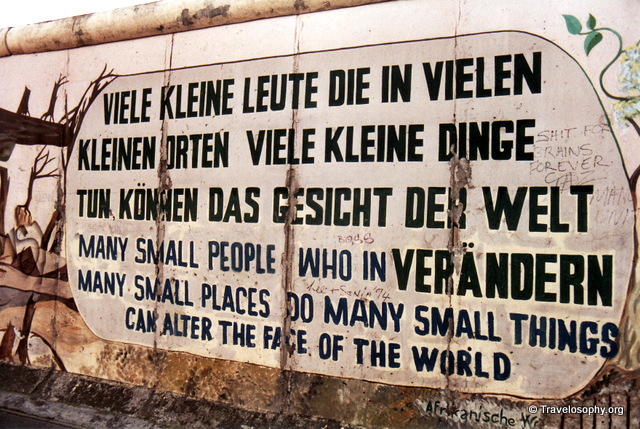
Folklore has the purpose of educating us about the real world as we grow up. It helps children become aware of archetypes in relation to the nature of people. When they then come across such characters in real life, they won’t be completely new to them.
On that note, we now visit an as-yet unexplored part of the Chicken Little fable. Not unlike the protagonists of many children’s fables, Chicken Little inadvertently “fell under the spell” of the proverbial wolf in sheep’s clothing, which in this case was a fox.
In many cultures, the fox appears in folklore as a symbol of cunning and trickery, or as a familiar animal possessed of magic powers.[1]
The fox or jackal or coyote in mythology would in many cases contain the archetype of the trickster. According to Jungian psychology, tricksters can be characterized as follows:
Psychologically, descriptive of unconscious shadow tendencies of an ambivalent, mercurial nature. [2]
… He is both subhuman and superhuman, a bestial and divine being, whose chief and most alarming characteristic is his unconsciousness. [3]
In his clearest manifestations he is a faithful reflection of an absolutely undifferentiated human consciousness, corresponding to a psyche that has hardly left the animal level. That this is how the trickster figure originated can hardly be contested if we look at it from the causal and historical angle.[4]
[They] are always marginal characters – outsiders, as they cannot trust or be trusted, cannot give or share, they are incapable of living in a community. [5]
Although tricksters are sometimes depicted as heroes, often being the villains people love to hate, but secretly root for, we will focus on this archetype’s penchant for creating havoc and causing mayhem.
All humans would contain the archetype of the trickster, just as we would contain all the archetypes, but some archetypes may be inactive or dormant or transcended. For example, not all children are bullies, but all children have the ability to bully under certain conditions. As we mature, we usually overcome malicious and/or childish tendencies.
Much of this happens through negative feedback from our parents, society, role models and educators. Continuous external negative feedback motivates us to individuation. This happens in all families, communities and societies where values and norms are still operative.
External motivation to individuation would in many cases lead to internal motivation to individuation. Other times people are naturally called to individuation from within, but that’s very often triggered through external events. Purposeful self-individuation or self-growth would, however, naturally require introspection and self-reflection. The individuating person moves beyond relying solely on feedback from society, or being prompted by external events and starts relying on internal feedback through self-observation. This way the person gets to know him or her self very well.
How people individuate is unique for each individual. That’s why we observe different levels of maturity at different stages in people’s lives in relation to elements of their personalities. For example, one could still be a child in some ways even as an adult, and be very mature in other ways, even as a child. This is not necessarily good or bad either way, it just depends on the archetypes involved, as not all archetypes contain shadow elements. The trickster archetype would however be an example of an archetype that does.
Not everyone responds to negative feedback and sometimes people only adjust their behaviour according to the minim levels of acceptance by society, without any actual individuation taking place. Not all people manage to process their shadow sides even in middle to old age.
Let’s revisit the tale of Chicken Little. After meeting her various animal counterparts who agree with her that the sky must be falling and that they should alert the king, into the story steps a fox. From the fable, The End of The World, Ireland:
So they got into the wood, and says Foxy Coxy, “Let me count if all are safe. I, Foxy Coxy, one; you, Goosey Poosey, two; Ducky Lucky, three; Cocky Locky, four; Henny Penny, five. Number five, I’ll put you in a safe place where the end of the world won’t hurt you.” So he took Henny Penny behind a bush and put her out of pain. “Now,” says he, coming back, “let us count if all the rest are safe. I, Foxy Coxy, one; you, Goosey Poosey, two; etc., etc. Number four, I’ll put you in a place where you’ll be safe when the end of the world comes.” He took him behind another bush, etc., etc., etc. “Now let me see if all the rest are here. I, Foxy Coxy, one; etc., etc., etc.” and so on till he put the fear of the world’s end out of every one of them. [6]
Here Chicken Little and her followers put their faith in a fox. Had they reached the king, the king would not have been able to assist them with their own personal self-exploration, but he may have been able to point them in that direction.
True individuation is crucial for both foxes and chickens, but in the case of chickens, it is usually pertinent as a survival mechanism. Foxes can always survive on chickens, but chickens cannot survive on foxes without becoming foxes themselves. Let’s explore this more:
“In the context of liminality, the trickster is a very dangerous figure: In a liminal situation where certainties are lost, imitative behavior escalates, and tricksters can be mistaken for charismatic leaders”. This means that in their search for guidance, the individuals caught in the liminal situation might choose to follow a trickster, whom they confuse with a charismatic leader capable of “saving” them. [7] – Wikipedia
Foxes can always be found waiting in the wings for disorientated chickens caught up in flock antics or crowd hysterics. Chicken Little was “eaten up” just at the moment when she was prompted by her psyche to individuate further. Metaphorically speaking she was assimilated. Foxes don’t care for whether the world is ending or the sky is falling; they only care for their next meal.
The trickster archetype always appears just as we are bound to make progress or go to another level. It is exactly during this entering of the transition phase, known as liminality, when we are most vulnerable to being led astray by outside influences and/or ourselves. Chicken Little “fell for a fox” because her inner trickster tripped her up. This is also known as self-sabotage.
A strong self would not fall for fox-like shenanigans, even if the ego-self may be courted for assimilation. In other words a strong self is more or less an immovable foundation whereas the ego-self remains very impressionable, can play tricks and can have tricks played upon it, even by itself.
The Self is our authentic self which is hidden under the layers and layers of elements which make up our personalities. Whereas the persona is built up from childhood through a layering process to do with cultural assimilation, socialisation, group association, belief systems and so on. The ego is the driving force behind this persona which we use as a reflection to the world of who we are, in order to get ahead in life, but also to use as a defence mechanism so as not to have to fully expose our real selves.
It is important for all human beings to have a well-developed and healthy ego in order to function normally. The ego is a necessary part of the psyche, but the ego-persona should preferably take second place to the authentic self, especially in ones private life, but ideally in all spheres. A person should aim to predominantly live from the authentic self as this would naturally lead to a solid and balanced disposition as well as natural inner contentment manifesting as natural happiness.
Continuous purposeful individuation moves the individual through the process of deepening their connection with their authentic self. The authentic self or real self is ultimately closely connected to the soul, so effectively the more one uncovers or discovers one’s real self, the closer one gets to one’s soul-self or higher self, which in turn is connected to universal consciousness or the cosmic soul or simply the universe or the Source, depending on how one would choose to express it. Some would say God. Once you realise that you have a higher self, responsibility follows and starts flowing naturally.
Many people have instead adopted their ego-self as their true self. Nowadays especially, the ego-self is in fact honoured above and beyond everything else. Whereas in the case of the authentic self, it does not have to be “built” or designed. It already exists naturally. It just needs to be uncovered and developed further. If, however, it is covered with layers and layers of the idealised self – the self we think society wants us to be – we would first have to peel off all those artificial layers. Ultimately, if the real self is not fully realised, we would very likely continue to remain vulnerable and open to being swayed by “group think”, mass culture, conformity, trickery and, indeed, self-sabotage.
The concept of liminality was first developed in the early 20th century by anthropologist Arnold van Gennep and later taken up by Victor Turner. More recently, usage of the term has broadened to describe political and cultural change as well as rituals. During liminal periods of all kinds, social hierarchies may be reversed or temporarily dissolved, continuity of tradition may become uncertain, and future outcomes once taken for granted may be thrown into doubt. The dissolution of order during liminality creates a fluid, malleable situation that enables new institutions and customs to become established. [10] – Wikipedia
Humanity, post-2012, is clearly in a liminal state. This is what the Mayans and other ancients wanted to warn people about, so that they could make the inner preparations in order to sail through the liminal storms and to know how to navigate the tides. However, it would seem that the collective ship has lost its rudder, that the anchors are gone and that our sails are flailing in the winds. Authentic growth which would normally have led to personal autonomy and would have incorporated a solid framework for navigating uncharted waters has fallen by the wayside.
In many parts of the world, neither church nor state is an authority any more and none of the belief systems which traditionally provided guidance have any or enough influence left to lead societies in any particular direction. There seem to be no prominent living spiritual leaders around whose guidance are trusted and respected and even if there were, we would very likely now reject their counsel. That morality and values have become redundant seems to be the general consensus in the developed world. This would mean that should new authentic leaders step forward, people would likely be very hard-pressed to recognise, notice or even acknowledge them.
This brings us to the immediate reality of the challenges we are facing. We have industrialised, modernised and globalised and in the process have become liberalised, yet thoroughly desensitised. We have mechanised, nuclearised and computerised and in the process have contaminated ourselves and the planet. We have moved away from ourselves and from nature by spending all our energy on conquering nature instead of ourselves.
There is only one place where we can go from here to find solutions to our intractable problems and that is to go to the root of them. We have already been everywhere else. The next step in our evolution is to start Building the New World Within – and for every person to find his and her personal leadership within.
“The shadow is a moral problem that challenges the whole ego-personality, for no one can become conscious of the shadow without considerable moral effort. To become conscious of it involves recognizing the dark aspects of the personality as present and real. This act is the essential condition for any kind of self-knowledge, and it therefore, as a rule, meets with considerable resistance. Indeed, self-knowledge as a psychotherapeutic measure frequently requires much painstaking work extending over a long period.” – C.G. Jung, 1951. [8].
Many believed that 2012 would herald an instant arrival of mass enlightenment. The tough reality is that only those who want to be enlightened will be. In practice, in order to progress and to evolve and to become enlightened, we have to transcend our unrefined archetypal shadows, which are remnants from a primitive past, (and which are nearing a place of redundancy as we are leaving the old era and entering a new one) – and thus enlighten ourselves. We have to be consciously involved in this transition process . At the very least, we need to acknowledge the collective need to do so. It will not be easy, but there can be no gain without pain. That is the nature of evolution. Globally speaking, the more individuals committing to this process the larger the collective will be.
This need for mass individuation comes exactly at a time when we are least prepared for it. If we should fail to do so, though, we will increasingly be obliged to face ourselves individually and collectively due to new realities on the ground. It will become impossible to deny personal and collective complicity in the environmental and ecological crises we have been creating and which will increasingly threaten our much-cherished comfort zones and convenient lifestyles. Collectively, we have two options: we can either go into deeper denial, or we can face ourselves and our challenges head-on, since we have created these very challenges in the first place.
The fact that there is an archetype of the end points to an evolutionary mechanism and, by extension, intelligent design. Never before had this archetype manifested so globally, so universally or so powerfully until the run-up to 2012. We have the built-in mechanisms for evolving, but – importantly – there is choice involved. Unlike all the animal species which operate on instincts alone, human beings have a far more evolved consciousness, one that is combined with will and choice. But this also poses a dilemma: We can choose to evolve or not. For example, if – or when – we trip over our inner shadows individually or collectively and we are challenged to overcome those elements within ourselves, we can either engage with the experience or not.
The fact that we have individual will means that we can either participate in our evolution of consciousness through self-awareness, or evade it, stifle it and stagnate it. In this sense, we have the kind of autonomy which animals do not possess. Animals cannot choose not to evolve, only nature itself can decide that for them. But in the case of human beings, how we act within our autonomy is dependent on our level of responsibility, and responsibility is either obtained through inner work or instilled through external forces or circumstances. If or when circumstances become too comfortable and overly convenient, over a long period of time, leading to unconsciousness and inertia, history has proven how that can lead to the collapse of civilisations.
There are major challenges ahead. A fast-changing external environment will soon make any approach other than a responsible approach impractical, outdated and illogical. The less prepared we are for becoming responsible, the more difficult it will be to adapt to living responsibly when we are forced to do so. To survive collectively we need to collectively progress from freedom devoid of responsibility to freedom derived from responsibility. Right now, it is our self-elected will to avoid responsibility that is holding us up. Which leaves us with this tantalising proposition: Maybe, just maybe, humanity can still save itself – by simply growing up.
To confront a person with his shadow is to show him his own light. Once one has experienced a few times what it is like to stand judgingly between the opposites, one begins to understand what is meant by the self. Anyone who perceives his shadow and his light simultaneously sees himself from two sides and thus gets in the middle.
— Carl Gustav Jung
In the next instalment we will explore what the individuation process might look like from a practical (and humorous) point of view.
© 2014. All Rights Reserved. Gypsycafe.org
This is Part 5 of a series. Continue to PART 6.
PART 1; PART 2; PART 3; PART 4;
The views and opinions expressed in this article are those of the author. Interpretations of Jungian concepts are the author’s and are used to motivate certain philosophical arguments within the context of this essay. Jungian themes are briefly touched upon and this does not constitute a comprehensive overview.
For Jungian terms, please see: Jung Lexicon – A Primer of Terms & Concepts by Daryl Sharp.
References & Citations:
[1] https://en.wikipedia.org/wiki/Foxes_in_popular_culture
[2] http://www.nyaap.org/jung-lexicon/t/
[3] “On the Psychology of the Trickster-Figure,” CW 9i, par. 472
[4] http://www.the16types.info/vbulletin/content.php/211-On-the-Psychology-of-the-Trickster-Figure-Jung
[5] http://en.wikipedia.org/wiki/Liminality
[6] From: The End of the World, Ireland. http://www.pitt.edu/~dash/type2033.html#kennedy
[7] http://en.wikipedia.org/wiki/Liminality
[8] reprinted in The Collected Works of C. G. Jung, Vol. 9 Part 2
http://firstyear.barnard.edu/legacy/modernism/jung
[9] [“The Shadow,”CW9ii, par. 14.]
[10] http://en.wikipedia.org/wiki/Liminality / http://en.wikipedia.org/wiki/Liminality#cite_note-2 / http://en.wikipedia.org/wiki/Liminality#cite_note-3 / http://en.wikipedia.org/wiki/Liminality#cite_note-4 / http://en.wikipedia.org/wiki/Liminality#cite_note-5
[11] http://en.wikipedia.org/wiki/Liminality / http://en.wikipedia.org/wiki/Liminality#cite_note-51 / http://en.wikipedia.org/wiki/Liminality#cite_note-52
[12] http://en.wikipedia.org/wiki/Liminality / http://en.wikipedia.org/wiki/Liminality#cite_note-53 / http://en.wikipedia.org/wiki/Liminality#cite_note-54


1 Comment
Pingback: The Eco-Shrine at Hogsback : Gypsy Café